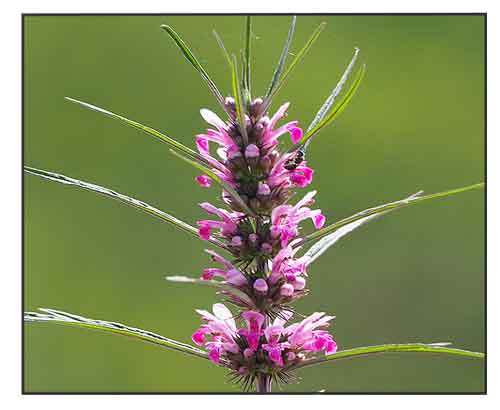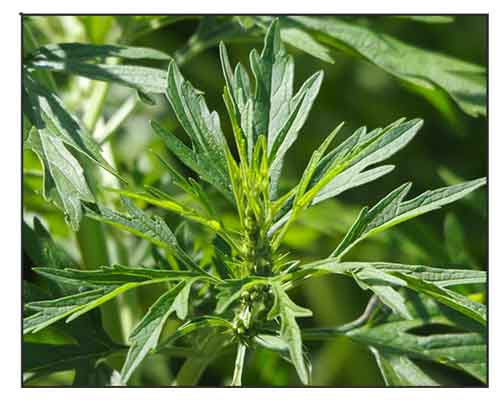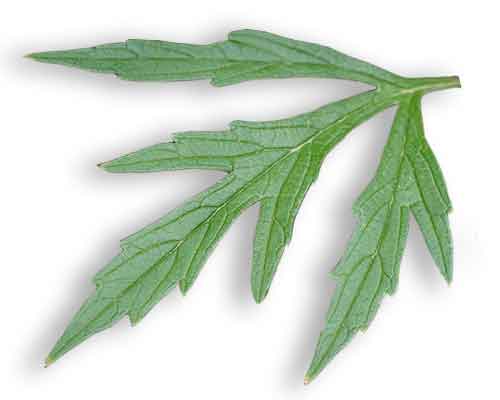 Gen info Gen info
- Leonorus (motherwort) is a genus of flowering plants in the family Lamiaceae.
- Leonurus japonicus' medicinal use in Asia dates back more than 1800 years.
- It was described in Shennong Bencao Jiing, the first pharmacy monograph in China, and was classified as "the highest grade" with non-toxicity. (6)
-
It is one of the 50 fundamental herbs used in traditional Chinese medicine.
Called yi mu cao, literally "beneficial herb for mothers" or "good for women", used for menstrual and delivery disorders caused by blood stasis such as dysmenorrhea, amenorrhea, and postpartum hemorrhage. (5)
- Many Chinese patent medicines are based on L. japonicus, including injections, granules, tablets, mixtures, capsules, soft capsules, ointments, and dripping pills, which are mainly used for gynecological and obstetrical diseases. (6)
- Etymology: The genus name Leonorus derives from Greek words leon, meaning "lion", and oura, meaning "tail", referring to the shape of the flower spikes. The specific epithet japonicus simply refers to Japan, where it is native.
Botany
• Herbs annual or biennial. Taproots with dense, fibrous rootlets. Stems erect, 30-120 cm, retrorse strigose, nodes and angles densely strigose. Petiole of stem leaves 0.5-3 cm, narrowly winged at apex; lower stem leaf blades ovate, base broadly cuneate, 3-palmatipartite; lobes oblong-rhombic to ovate, 2.5-6 × 1.5-4 cm, pinnately divided, adaxially strigose, abaxially pilose, glandular; mid stem leaf blade rhombic, palmatipartite, lobes oblong-linear, base narrow cuneate. Verticillasters 8-15-flowered, 2-2.5 cm in diam.; floral leaves subsessile, linear to linear-lanceolate, 3-12 × 2-8 mm, entire or dentate; bracteoles spiny, shorter than calyx, ca. 5 mm, appressed puberulent. Flowers sessile. Calyx tubular-campanulate, 6-8 mm, appressed puberulent; teeth broadly triangular, 2-3 mm, apex spinescent. Corolla white or reddish to purplish red, 1-1.2 cm, villous; tube ca. 6 mm, inconspicuously scaly annulate inside; upper lip straight, concave, oblong, ca. 7 × 4 mm, margin entire, ciliate; lower lip slightly shorter, base sparsely scaly; middle lobe obcordate, base constricted, margin membranous, apex emarginate; lateral lobes ovate. Filaments sparsely scaly. Nutlets brownish, oblong, triquetrous, ca. 2.5 mm, base cuneate, apex truncate, smooth. (Credit: Harvard University Herbaria) (Flora of China)
 Distribution Distribution
- Native to the Philippines.
- In Batan
; Luzon: Cavite, NCR, Quezon, Rizal; Mindanao: Zamboanga, Zamboanga del Sur.
- Also native to Amur, Assam, Bangladesh, Borneo, Cambodia, China North-Central, China South-Central, China Southeast, East Himalaya, India, Inner Mongolia, Japan, Jawa, Khabarovsk, Korea, Laos, Lesser Sunda Is., Malaya, Maluku, Manchuria, Myanmar, Nansei-shoto, Nepal, Primorye, Qinghai, Queensland, Sulawesi, Sumatera, Taiwan, Thailand, Tibet, Vietnam, West Himalaya, Xinjiang. (1)
- Considered a highly invasive weed widely naturalized in tropical and subtropical ecosystems. Common as a weed in waste places, disturbed sites, and along roadsides. (13)Â
- Listed as invasive in Hawaii, the Cook Islands, French Polynesia, Tonga, Costa Rica, Mexico, Cuba, Puerto Rico, and the Virgin Islands. (13)Â
- A common ornamental in gardens and yards.
Constituents
- Phytochemistry studies have identified more than 280 compounds. The chemical constituents are mainly monoterpenoids, sesquiterpenoids, diterpenoids, triterpenoids, steroids, alkaloids, flavonoids, and phenylpropanoids. (see study below) (6)
- Study of n-butanol fraction isolated 14 compounds, namely: izalpinin (1), methyl(E)-3-(2,5-dihydroxyphenyl)acrylate (2), alatusol D (3), 2,3-dihydroxy-1-(4-hydroxy-3,5-dimethoxyphenyl)-1-propanone (4), 3-hydroxy-1-(4-hydroxy-3,5-dimethoxyphenyl)-1-propanone (5), methyl 4-hydroxy-3-methoxybenzoate (6), methyl 4-hydroxy-3,5-dimethoxybenzoate (7), 3,4,5-trimethoxybenzoic acid (8), vanillic acid (9), 4-(methoxymethyl)-phenol (10), 4-hydroxybenzoic acid (11), 4-methoxy-benzoic acid (12), uracil (13), methyl linoleate (14). (see study below) (15)
- Study of aerial parts of L. japonicus isolated two phenolic acids, gallic acid (1) and syringic acid (2), and five flavonoids, apigenin (3), luteolin (4), kaempferol (5), quercetin (6), and myricetin (7). (see study below) (21)
- Study of fruits for essential oil revealed mainly sesquiterpenes and diterpenes, with phytone, phytol, caryophyllene oxide and ß-caryophyllene as the most significant constituents.
(see study below) (26)
Properties
- Studies have anti-aging, wound healing, uterine smooth muscle regulating, blood circulating, diuretic, anti-inflammatory, anti-endometritis, antioxidant, antimelanogenesis, anti-pigmentation, gastroprotective, menopausal-symptom alleviating, antibacterial properties.
Parts used
- Aerial parts, essential oil.
 Uses Uses
Edibility
- Limited information on edibility.
- Fruits (Chongweizi) reportedly used as drug or tea drink to improve vision and reduced blood pressure. (26)
Folkloric
- No reported folkloric medicinal use in the Philippines.
- In traditional Chinese medicine,
used for menstrual and delivery disorders caused by blood stasis such as dysmenorrhea, amenorrhea, incomplete abortion, and postpartum hemorrhage.
- Used for pain relief, lowering of blood pressure, as sedative, and for promoting menstruation and expulsion of placenta after giving birth.
- In Indonesia, used for treatment of hypertension: Leaves, stems, and roots are washed, cut into pieces, and dried; 2-3 tablespoons of dried Tainge are brewed with 1 glass of hot water, and drunk. (20)
- Leaves are diuretic. Leaves in bath water used to relieve itching and painful shingles. Decoction of whole plant, alone or mixed with other herbs, used as ophthalmic. Poultice of plant used for shingles. Dried flowers are emmenagogue; also used to help expel the placenta after childbirth. (24)
Studies
• Phytochemistry and Pharmacologic Effects: Phytochemistry studies have identified more than 280 compounds. The chemical constituents are mainly monoterpenoids, sesquiterpenoids, diterpenoids, triterpenoids, steroids, alkaloids, flavonoids, and phenylpropanoids. Terpenoids account for 53.2% of isolated components and mainly possess antithrombotic, vasorelaxant, procoagulant, anti-platelet aggregative, neuroprotective, anti-inflammatory, α-glucosidase, acetylcholinesterase inhibitory, immune regulating, antibacterial, and cytotoxic activities. (6)
• Anti-Aging / sir-2.1 and daf-16 Activation: Study evaluated the longevity properties of methanolic extract of L. japonicus (MLJ) using Caenorhabditis elegans model system. Results showed MLJ could significantly prolong the median and maximum life span of worms. It also reduced the accumulation of lipofuscin in aged worms and delayed age-dependent decrease in locomotion and thermotolerance suggesting a beneficial role in healthspan. MLJ also increased stress resistance against oxidative stress and decreased intracellular ROS generation. The anti-aging properties of MLJ could be attributed to sir-2.1 and insulin/IGF signaling-dependent daf-16/FOXO activation. (7)
• Wound Healing / Aerial Parts: Study evaluated the wound healing ability of hydroalcoholic and aqueous extracts of aerial parts of L. japonicus in a rat wound healing model. The extracts showed high flavonoid content. Extracts showed wound healing effect evidenced by improved wound healing phases, like inflammatory modulation, wound contraction, and collagen synthesis, resulting in faster healing in rats. Effects may be attributable to extracts' polyphenolic compounds. (8)
• Effects on Uterine Smooth Muscle / Coumarins: Study investigated the effects of 8 coumarins from L. japonicus on isolated uterine smooth muscle and preliminary mechanism of the most effective compound. Of compounds isolated, coumarins 1 and 2 significantly promoted contraction of rat uterine smooth muscle strips, whereas coumarins 3-5 showed remarkable relaxing effects against oxytocin (OT)-induced rat uterine smooth muscle contraction. Further study revealed bergapten (coumarin 1) significantly increased level of Ca2+ in uterine tissue by promoting intracellular Ca2+ influx and intra-
cellular Ca2+ release, which were related to activation of L-type Ca2+ channels and
α-receptors. Osthole, coumarin 5, an α-receptor antagonist, inhibited OT-induced uterine smooth muscle contraction by decreasing the level of Ca2+ in uterine tissue via inhibition of extracellular Ca2+ influx and intra-
cellular Ca2+ release. Results suggest coumarins are effective substances for regulating uterine smooth muscle contraction with diverse, even opposite effects.
Study suggests coumarins are closely related to the efficacy of L. japonicus in the treatment of dysmenorrhea and postpartum hemorrhage. (9)
• Angiogenic / Essential Oil: Study evaluated the angiogenic effects of motherwort total alkaloids and essential oil, as well as their primary components, on zebrafish embryos. The total alkaloids significantly increased angiogenesis in transgenic Tg zebrafish embryos. Results showed, for the first time, that motherwort alkaloids are potent angiogenic agents. Angiogenesis is a critical aspect of postpartum recovery. Results provide evidence for traditional use of motherwort water decoction to promote postpartum recovery. (10)
• Blood Circulating Effect / Anti-Inflammatory / Diuretic: Study evaluated the blood circulation activating, anti-inflammatory, and diuretic effecets of L. japonicus extracts in a rat model. Phytochemical analysis identified 79 constituents, which were effective in elevating body weight, food consumption, water intake, and urinary excretion volume, along with amelioration of traumatic muscle tissues in model rats. The extract also prominently decrease the contents of plasma viscosity, platelet aggregation time, various coagualation factors, while significantly increasing anti-thrombin III, 6-keto-PGF1α, and t-PA contents. The Lj extract also inhibited TNFα, IL-6, IL-8, angiotensin II, antidiuretic hormone, aldosterone, aquaporin 1 (AQP1), AQP2, and AQP3 levels, and markedly elevating IL-10 and natriuretic peptide levels. Study suggests Lj possessed prominent activating blood circulation, anti-inflammatory, and diuretic effects. (11)
• Antioxidant / Antiaging: Study evaluated the L. japonicus extract and fractions for antioxidant and anti-aging properties. The 30% EtOH fraction showed highest antioxidant effect by DPPH. Collagenase synthesis was significantly increase in the anti-wrinkle testing. All extracts inhibited the generation of H2O2 in a dose dependent manner. The 30% EtOH extract also showed best anti-aging effect. Strong antioxidant function was attributed to rutin and adenosine. Results suggest potential for use in cosmetics, moisturizers, antioxidant and anti-aging agents. (12)
• Effect on Endometritis / Alkaloids / Aerial Parts: The aerial parts of L. japonicus are famous traditional Chinese medicine for its efficacy in treating obstetrical and gynecological diseases. Study evaluated the effect of motherwort total alkaloids (MTAs) on endometritis and its mechanism. UPLC-Q identified 39 alkaloids in the MTAs. The MTAs exerted pharmacologic effects on endometritis through a multi-ingredient and multi-target pattern. Network pharmacology showed the MTAs had 152 candidate targets in treating endometritis. The MTAs were found to potentially affect PI3K-AKT and NF-kB signaling pathways. MTAs exhibited significant effects on endometritis in vivo, and significantly reduced the overproduction of inflammatory mediators, and promoted endometrial cell repair via PI3K/AKT/NF-κB signaling pathway. Study provides basis for use of MTAs in treatment of endometritis. (14)
• Antioxidant Activity / Izalpinin: Study evaluated L. japonicus for antioxidant activity and chemical constituents. Study of n-butanol fraction isolated 14 compounds. Izalpinin (compound 1) showed good antioxidant activity, exhibiting scavenging effect on ABTS radical cations better than that of positive drug vitamin C. Scavenging effect on DPPH free radicals was slightly weaker. (see constituents above) (15)
• Anti-Melanogenesis / Antioxidant: Leonurus japonicus is an important anti-skin pigmentation herb used in traditional Chinese medicine. Study evaluated water and ethanol extracts and polysaccharide extract (LJPs) from Lj by LC-MS/MS and HPLC-DAD. Results showed the water and ethanol extracts contained alkaloids, flavonoids, and phenolic acids. LJPs mainly contained glucose, fucose, glucuronic acid, mannose, threonine, and arginine. Water extract and polysaccharides significantly reduced LPS-induced intracellular ROS content and exhibited cytoprotective effect. The extracts displayed higher matrix metalloproteinase-2 (anti-MMP-2) and anti-MMP-9 and anti-tyrosinase activities.The poly- saccharides displayed significantly greater inhibitory effect of intracellular ROS and tyrosinase protein expression than α-arbutin and ursolic acid used for clinical treatment of skin pigmentation. Results suggest a promising candidate for anti-pigmentation treatment. (16)
• Gastroprotective: Study evaluated the anti-gastric effect and genotoxicity of L. japonicus (Lj). Leonurus japonicus effective prevented the degenerationof surface mucous cells and glandular epithelial cells and vascular congestion induced by HCl/EtOH. Study suggest further experiments to determine the role of Lj in the gastric injury process such as cyclooxygenase signaling pathway and secretion of mucus in the stomach. (17)
• Anti-Inflammatory / Leolignosides / Aerial Parts: An acid water-soluble fraction of 95% EtOH extract of L. japonicus exhibited significant anti-inflammatory activity by suppressing the p-ERK/ERK ration and iNOS expression. Further study of the fraction isolated 3 previously undescribed sesquineolignan glycosides, leolignosides A-C (1-3). Leolignosides A-C suppressed LPS-induced NO overproduction in RAW264.7 macrophages. The aglycone (3a) of leolignoside C also inhibited NO overproduction and decrease the pERK/ERK and p-NF-kB/NF-kB rations, indicating 3a may exert anti-
inflammatory effects through ERK/NF-kB signaling pathway. (18)
• Leonurine / Aerial Parts: Leonorus japonicus has been widely used to cure gynecological diseases, such as incomplete abortion and menoxenia. Leonurine, a major active alkaloid compound only found in L. japonicus, was extracted and purified. Evidence has shown leonurine can regulate a variety of pathologic processes including oxidative stress, inflammation, fibrosis, apoptosis, and metabolic disorders. Study reviewed the pharmacologic actions and biological functions of leonurine. (19)
• Antioxidant / Aerial Parts: Study of aerial parts isolated two phenolic acids, gallic acid (1) and syringic acid (2), and five flavonoids, apigenin (3), luteolin (4), kaempferol (5), quercetin (6), and myricetin (7). Antioxidant activity was evaluated by DPPH free radical scavenging assay/ EtOAc partitioned fraction and compounds 1, 4, 5, 6, and 7 showed significantly high antioxidant potential compared with controls, alpha-tocopherol and BHT. (21)
• Prevention of Postpartum Hemorrhage After C-Section: Postpartum hemorrhage is the main cause of maternal death and is a high-safety risk to cesarean sections. Study evaluated the effect of L. japonicus injection on preventing postpartum hemorrhage after cesarean section and its influecne on protein expression of Rho-associated kinase (ROCK) I and ROCK II. Parturients were divided into the oxytocin group and the Leonurus japonicus group. Study showed L. japonicus injection could promote uterine contractility and prevent poostpartum hemorrhage through regulation of protein expression of ROCK I and ROCK II. The specific mechanism was not analyzed. (22)
• Comination of L. japonicus and Carboprost Tromethamine for Prevention of Postpartum Hemorrhage in High Risk Women: A meta-analysis assessed the efficacy and safety of carboprost tromethamine (CT) combined with Lj for presention of postpartum hemorrhage in high-risk women. Most clinical trials and experience indicate that the prophylactic use of L. japonicus alone or in combination with CT may have a good effect on prevention of postpartum hemorrhage after delivery. (23)
• Alleviation of Menopausal Symptoms: Study evaluated the alleviating effect of combination of L. japonicus, Eclipta prostata, and Pueraria lobata (LEPE) on menopausal symptoms in an ovariectomized menopausal rat model. LEPE supplementation showed no hepatotoxicity or endocrine disturbance. It decreased type 1 collagen (CTX-1) but did not affect bone mineral density or osteocalcin. Results suggested LEPE may relieve menopausal symptoms by improving vasomotor symptoms and depression in an OVX rat menopause model. (25)
• Antibacterial / Essential Oil of Herbs: Study evaluated the antibacterial activity of essential oils of herbs (Yimucao) and fruits (Chongweizi) obtained by hydrodistillation. The EO of fruits consisted mainly of sesquiterpenes and diterpenes, with phytone, phytol, caryophyllene oxide and ß-caryophyllene as the most significant constituents. The EO showed antibacterial activity against various Gram(+) bacteria. The oil of Chongweizi was mainly made up of bornyl acetate amd aliphatic hydrocarbons, and was inactive in the antibacterial assay. (26)
Availability
- Wild-crafted.
- Ornamental cultivation.
- Seeds in the cybermarket. (S&S) (Am)
|

![]()






